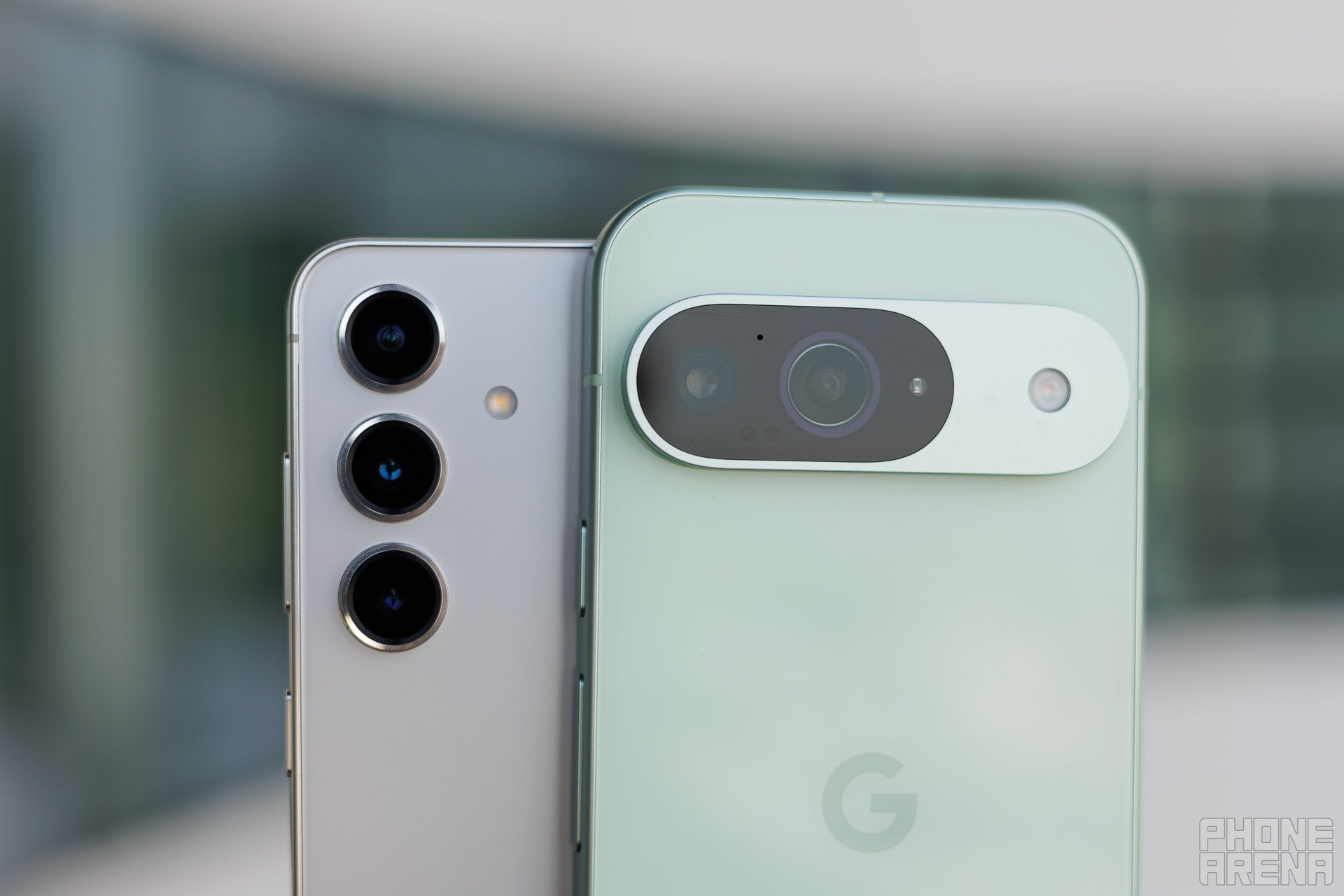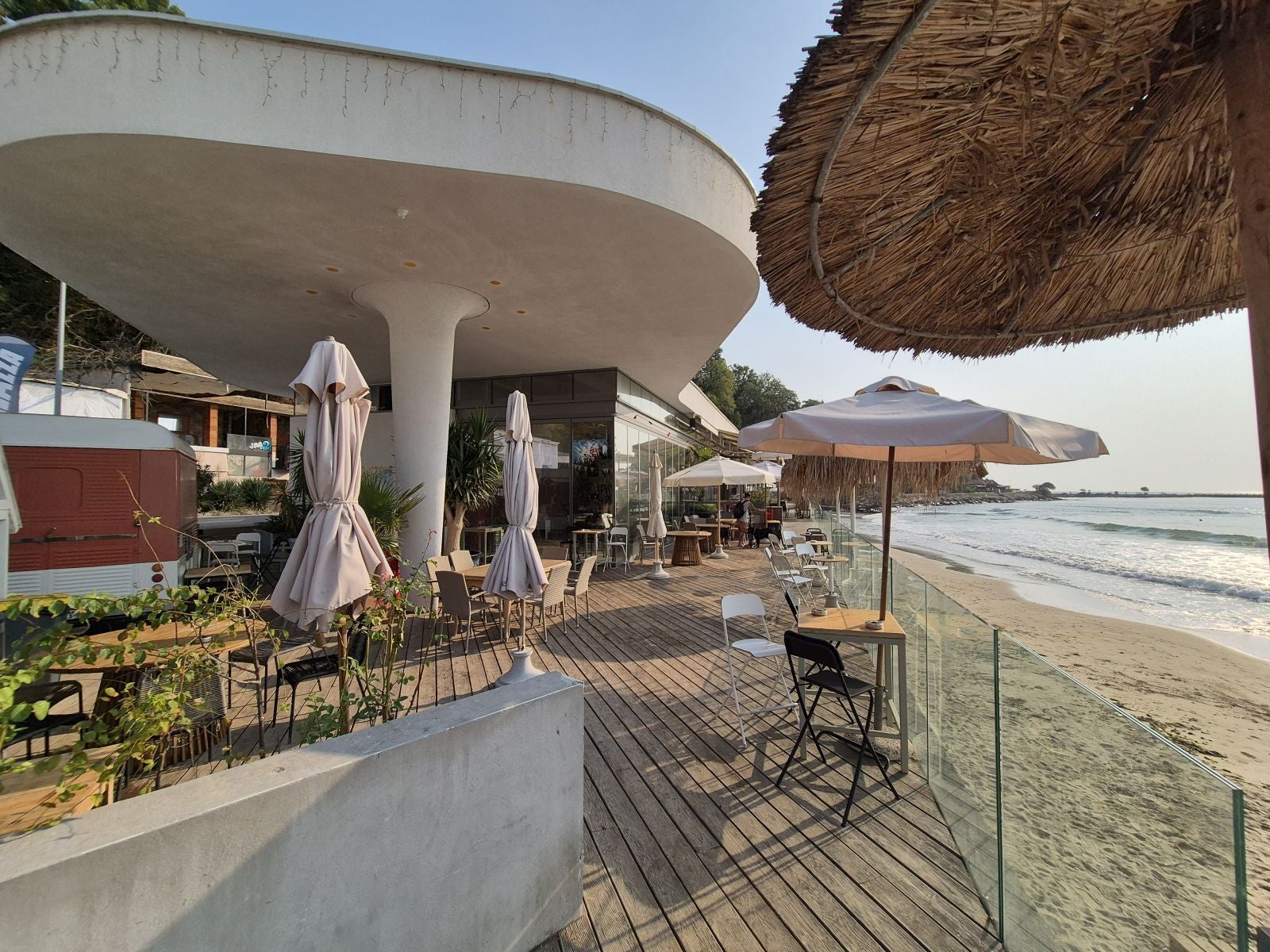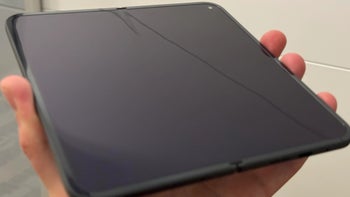Google Pixel 9 vs Galaxy S24: Can the vanilla Pixel prove its worth?
We may earn a commission if you make a purchase from the links on this page.

Intro
The Pixel 9 series is finally official after Google lifted the curtain over the new Pixel 9 devices on August 13 during the annual Made by Google event. And even though it might be hard to recommend the vanilla Pixel 9, the model will probably appeal to many people out there. Like every year, the Pixel 9 competes against other base flagships from big manufacturers, and the Galaxy S24 is one such flagship.
The Pixel 9 and the Galaxy S24 are fighting for the same audience, and they are pretty close to each other when it comes to physical size, weight, specs, and overall features. Today, we're going to look a bit deeper into this particular comparison in order to find out which one is the better choice.
Which compact Android flagship will take the 2024 crown? Read on to find out!
Which compact Android flagship will take the 2024 crown? Read on to find out!
Pixel 9 vs Galaxy S24 main differences:
| Pixel 9 | Galaxy S24 |
|---|---|
| Larger and heavier device | A more compact phone |
| Slightly larger 6.3-inch display, 120Hz refresh rate | Similar 6.2-inch screen, 120Hz refresh rate |
| Dual camera with the typical wide-ultrawide combination | Triple camera system with the addition of a telephoto lens |
| Base memory configuration is 12GB RAM | Less memory, just 8GB of RAM onboard |
| Equal native storage 128GB, with a 256GB option | 128GB base storage in here as well |
| Larger 4,700mAh battery that will potentially deliver better battery life | A smaller 4,000mAh battery |
| 45W wired charging, wireless charging support | Slower 25W wired charging, wireless charging |
Table of Contents:
Also read: Google Pixel 9 vs Google Pixel 8: There's an unsurprising winner
Design and Display Quality
The new compact norm

We're living in a world where compact phones now have 6.1-inch screens, and that's the new reality. Apple probed the waters with the iPhone Mini, and Asus made a compact flagship for a couple of years, but now these sub-6-inch devices are history.
Design-wise, the Pixel 9 series takes a radical turn, well, compared to what we normally see between different generations. The Camera Bar design is gone, and we have a more traditional, albeit horizontal, camera bump on the back, a flat body with flat sides.
To be completely honest, the overall body design of the Pixel 9 looks very familiar and similar compared to the Galaxy S24, and even the iPhone 15. We've arrived at this conformity, where the only design difference is the way the camera on the back looks.
Design-wise, the Pixel 9 series takes a radical turn, well, compared to what we normally see between different generations. The Camera Bar design is gone, and we have a more traditional, albeit horizontal, camera bump on the back, a flat body with flat sides.
The Pixel 9 is still taller, wider, and thicker than the Galaxy S24 by a couple of millimeters, and quite a few grams heavier. The Google phone weighs 198 grams, and in comparison the Galaxy S24 weighs substantially less at 167 grams.
Frankly, both devices look very similar from the front, with the punch-hole camera in the center, the flat screen and sides, and the slightly rounded edges. The materials are also the same: an aluminum frame with glass on the front and back—nothing out of the ordinary. As we already mentioned, the only difference is the design of the camera on the back.
Here are the official Galaxy S24 colors:
Moving to the screens, we find more similarities, even though the Galaxy S24 seems to have a smaller diagonal. It's a bit misleading, as if you try and measure the diagonal from one curved edge to the other, the real size comes at six inches, and it all depends on the curvature of the corners.
The Pixel 9 sports a 6.3-inch screen with a resolution of 1080 x 2424 pixels, resulting in pixel density of around 422 PPI. This panel is not an LTPO one, and can switch only between 60Hz and 120Hz. The brightness Google cites in the specs sheet is 1800 nits of HDR, and 2700 nits of peak brightness.
- Marble Gray
- Cobalt Violet
- Onyx Black
- Amber Yellow
And here you can find all the Pixel 9 colors available:
- Obsidian
- Porcelain
- Wintergreen
- Peony
Moving to the screens, we find more similarities, even though the Galaxy S24 seems to have a smaller diagonal. It's a bit misleading, as if you try and measure the diagonal from one curved edge to the other, the real size comes at six inches, and it all depends on the curvature of the corners.
The Pixel 9 sports a 6.3-inch screen with a resolution of 1080 x 2424 pixels, resulting in pixel density of around 422 PPI. This panel is not an LTPO one, and can switch only between 60Hz and 120Hz. The brightness Google cites in the specs sheet is 1800 nits of HDR, and 2700 nits of peak brightness.
The Galaxy S24, on the other hand, comes equipped with a 6.2-inch LTPO panel capable of doing 1Hz to 120Hz with everything in between. The resolution is 1080 x 2340 pixels, and the pixel density - 419 PPI. Samsung advertised this panel as capable of outputting up to 2600 nits peak brightness, and we were able to measure 1345 nits in our display test.
In our display tests, the Pixel 9 managed to output almost 2,000 nits of real-world brightness across the whole display, which is impressive. It's substantially more than the 1,345-nit result of the Galaxy S24, but on the other hand, the Galaxy phone can go twice as lower with 0.9 nits minimum brightness. The color temperatures are almost identical, and the color accuracy is better on the Pixel 9.
Display Measurements:
In our display tests, the Pixel 9 managed to output almost 2,000 nits of real-world brightness across the whole display, which is impressive. It's substantially more than the 1,345-nit result of the Galaxy S24, but on the other hand, the Galaxy phone can go twice as lower with 0.9 nits minimum brightness. The color temperatures are almost identical, and the color accuracy is better on the Pixel 9.
Performance and Software
It's a hardware battle, but an AI war

The Galaxy S24 has the Snapdragon 8 Gen 3 chip, fine-tuned just for Galaxy, so it runs a bit faster and smoother than the regular 8 Gen 3.
On the other hand, the Pixel 9 has the new Tensor G4 processor. It might not be as speedy as the Snapdragon 8 Gen 3 in benchmarks, but Google has put a lot of work into making it great at machine learning, which could give it an AI edge.
On the other hand, the Pixel 9 has the new Tensor G4 processor. It might not be as speedy as the Snapdragon 8 Gen 3 in benchmarks, but Google has put a lot of work into making it great at machine learning, which could give it an AI edge.
Well, the benchmark scores are in, and you can find them below. Even though it seems that Google has caught up a little, the gap is still there and the Snapdragon 8 Gen 3 is the clear winner when it comes to numbers. That being said, single core scores are a little bit closer compared to the last gen (S23 vs Pixel 8), and these matter the most in day-to day usage.
When it comes to AI, the Galaxy S25 shines with the Galaxy AI Suite, a top-notch set of tools to make life easier. While others are trying to catch up, Samsung's AI features are the most polished right now. But don’t count out the Pixel 9 just yet. Google is busy integrating its Large Language Model, Gemini, into Android and older Pixel phones. The Pixel 9 lineup comes with Gemini Nano onboard, and there's a subscription service called Gemini Advanced, which gives users the ability to use multi-modal approach to Gemini Nano, or in other words hold natural conversations and make this LLM AI do stuff for them.
As for RAM and storage, the Galaxy S24 comes with 8GB of RAM and 128GB of storage. The Pixel 9 upgrades the base RAM a bit, it comes with 12/128GB base memory configuration, probably due to on-device AI demands. The new TPU portion of the G4 chipset can process 48 tokens per second, an industry-leading result when it comes to machine learning tasks.
Camera
Three is more than two?

The vanilla Pixel 9 has a dual camera system with the usual suspects onboard, a wide main lens, and an ultrawide camera. The main sensor is a 50MP octa phase detection wide camera with ƒ/1.68 aperture and 82° field of view. The sensor itself is a 1/1.31" image sensor and even though there's no telephoto lens, it can do 8x with Google's Super Res Zoom technology. The Ultrawide camera is a 48 MP Quad PD sensor under a lens with an ƒ/1.7 aperture, 123° field of view and 1/2.55" image sensor size.
Time for some samples!
Main Camera
In the era of computational photography both the Pixel 9 and the Galaxy S24 manage to produce great images with their main cameras. There's a difference in color tone with the image from the Pixel 9 being warmer with a red tint, while the Galaxy S24 sample looks slightly brighter and a little too sharp.
The night shots display a reversed situation. The Pixel 9 produced a brighter image in this specific situation, and it's also a bit soft, while the Galaxy S24 managed to preserve more details and kept the image closer to what we saw during the photoshoot.
Zoom Quality
The Galaxy S24 features a dedicated telephoto camera with 3x optical zoom, while the Pixel 9 relies on algorithms. There's more detail preserved by the Galaxy in the 3x samples and they look sharper. The Pixel 9 does a good job but again the tonality of the picture is different and it's softer with less definition.
When it comes to 5x samples things are looking closer between these two. At this level of magnification both phones have to rely on processing power, and even though the same tonal differences are apparent here, the level of detail is much closer than what we saw in the 3x samples.
At 8x things start to look overly processed, but it seems that the Pixel 9 handles this a tad better. There's a level of consistency between all zoomed images on the Pixel 9, while the Galaxy S24, while better at the native 3x optical zoom level, starts to display over-sharpening and artifacts at higher magnification.
Ultra-wide Camera
The ultrawide samples preserve the same differences we saw earlier. The Pixel 9 tends to produce softer and warmer images, while the Galaxy S24 photos look more defined and there's more detail (at least at first glance), but the end result might be too sharp for some people.
Selfies
The selfies from both the Pixel 9 and the Galaxy S24 look great, and again there are differences. Here the Pixel 9 did a better job at preserving details and offering definition, while the photo from the Galaxy S24 looks more realistic in terms of colors and dynamic range. The Pixel 9 image also has that reddish tint, especially apparent if you look at the skies in the background.
Battery Life and Charging
Conservative as always

Another interesting department is the battery and charging. The Pixel 9 is a slightly larger device than the Galaxy S24, but not by much. That being said, Google seems to have found a way to cram in a larger battery, a 4,700mAh cell.
The Galaxy S24, on the other hand, features a smaller 4,000mAh battery cell inside, and we expected a slight advantage for the Google phone here. Looking at the battery test result below, this advantage for the Pixel phone is anything but small. While the browsing test yielded about an hour difference in favor of the Pixel 9, when it comes to video streaming and gaming, the Google phone just obliterates the Galaxy. Two an a half hours more in video streaming and almost twice the longevity in 3D gaming.
The Galaxy S24, on the other hand, features a smaller 4,000mAh battery cell inside, and we expected a slight advantage for the Google phone here. Looking at the battery test result below, this advantage for the Pixel phone is anything but small. While the browsing test yielded about an hour difference in favor of the Pixel 9, when it comes to video streaming and gaming, the Google phone just obliterates the Galaxy. Two an a half hours more in video streaming and almost twice the longevity in 3D gaming.
PhoneArena Battery Test Results:
When it comes to charging, both of these phones aren't going to blow your mind with speed. The Galaxy S24 comes with a rather uninspiring 25W wired charging support, and Google is offering a slightly faster 45W wired charging on the Pixel 9. The advertised charging speeds are 55% in 30 minutes. The results are not surprising, and the Pixel 9 takes longer to charge to full, despite its faster charging support, mainly because of its bigger battery.
Specs Comparison
Here's a quick specs comparison for the number nerds out there. You can check out our full Pixel 9 vs Galaxy S24 specs comparison on PhoneArena.
| Specs | Pixel 9 | Galaxy S24 |
|---|---|---|
| Dimensions | 152.8 x 72 x 8.5 mm | 147 x 70.6 x 7.6 mm |
| Weight | 198g | 167g |
| Screen | 6.3-inch OLED 60-120Hz | 6.2-inch Super AMOLED 1-120Hz LTPO |
| Processor | Google Tensor G4 (3nm) | Snapdragon 8 Gen 3 (for Galaxy) |
| RAM, Storage and Price | 12/128GB for $799 | 8/128GB for $799 |
| Cameras | 50MP main 48MP ultra-wide 10.5MP front | 50MP main 12MP ultra-wide 10MP telephoto, 3x zoom 12MP front |
| Battery Size | 4,700 mAh | 4,000 mAh |
| Charging Speeds | 45W wired wireless support | 25W wired wireless support |
Which one should you buy?

This one's rather difficult. Both the Pixel 9 and the Galaxy S24 seem like decent compact Android flagships. Google bumped up the price of the vanilla Pixel 9 with $100, and now it sits right next to the Galaxy S24 in terms of starting price. Both phones start at $799.
To make matters even worse, the new Pixel 9 design is somewhat close to the Galaxy S line, barring the camera bump on the back. If we look at the specs sheet and benchmark numbers alone, the Galaxy S24 wins the performance game, while the Pixel 9 wins the battery race.
In the camera department, the Galaxy S24 comes with a dedicated telephoto camera, while the Pixel 9 relies on algorithms and digital zoom, but overall, the Google phone does a great job, especially at high magnification levels.
The Pixel 9 has a brighter screen, in fact, it's the brightest we've ever tested with 2,000 nits of real-life brightness. Other than that, both displays are pretty comparable, with similar size and resolution. The S24 features an LTPO panel, and it's able to go between 1 and 120Hz, while the Pixel 9 can switch between 60 and 120Hz.
Both phones come with their own version of AI magic, with the Pixel 9 introducing Gemini Live, and the S24 running Galaxy AI, and both offer seven years of software updates. The Galaxy S24 is slightly more compact and also lighter, so if you like smaller flagships, you'll be better off with the S24. Overall, we feel that these two are neck and neck, and it will all boil down to personal preference. Whichever you choose, you won't be disappointed.
To make matters even worse, the new Pixel 9 design is somewhat close to the Galaxy S line, barring the camera bump on the back. If we look at the specs sheet and benchmark numbers alone, the Galaxy S24 wins the performance game, while the Pixel 9 wins the battery race.
The Pixel 9 has a brighter screen, in fact, it's the brightest we've ever tested with 2,000 nits of real-life brightness. Other than that, both displays are pretty comparable, with similar size and resolution. The S24 features an LTPO panel, and it's able to go between 1 and 120Hz, while the Pixel 9 can switch between 60 and 120Hz.
Both phones come with their own version of AI magic, with the Pixel 9 introducing Gemini Live, and the S24 running Galaxy AI, and both offer seven years of software updates. The Galaxy S24 is slightly more compact and also lighter, so if you like smaller flagships, you'll be better off with the S24. Overall, we feel that these two are neck and neck, and it will all boil down to personal preference. Whichever you choose, you won't be disappointed.
























![iPhone users on AT&T left without service after massive outage [UPDATED]](https://m-cdn.phonearena.com/images/article/161893-wide-two_350/iPhone-users-on-AT-T-left-without-service-after-massive-outage-UPDATED.jpg)








Things that are NOT allowed: